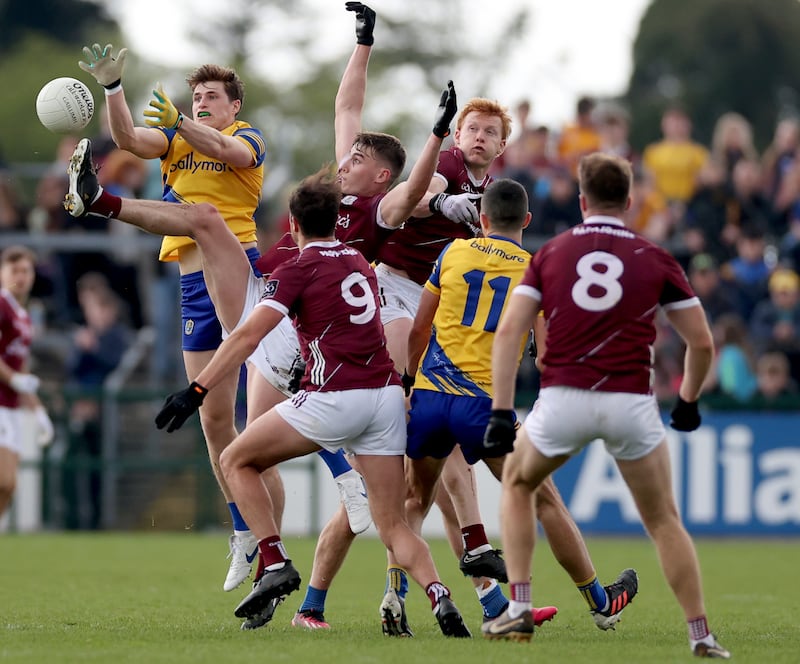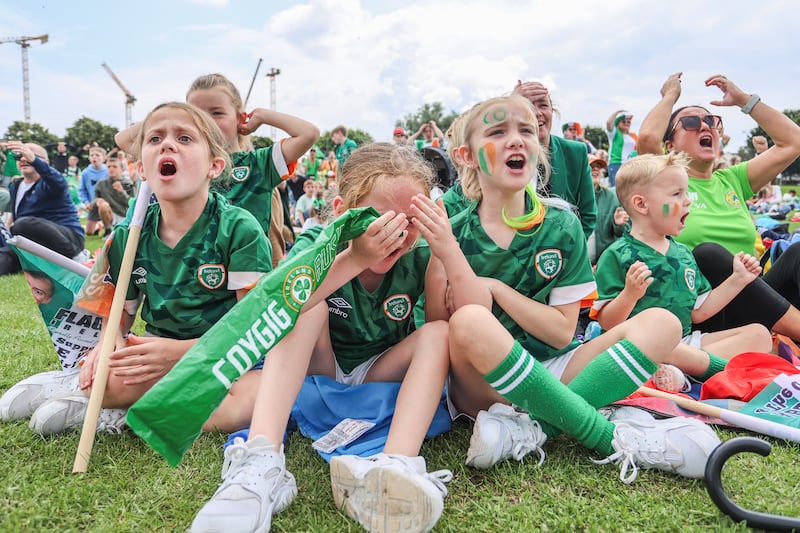It’s easy to imagine the sense of being down and out at half-time in some of the dressingrooms last weekend. Dublin had already shot four goals and 15 points against Laois, might well have shot even more. More sobering still Offaly were up 1-8 to 0-2 on Meath, that game as good as over too. Even if Meath raised some spurt in the second half.
I was over in Killarney on Saturday, where Kerry against Tipperary was another foregone conclusion, even before half-time. By then, Kerry were in front 0-12 to 0-2, despite Tipperary playing an all-out defensive game. The atmosphere was funerial.
It reminded me of the old story about the parish priest coming into the dressingroom at half-time during a Kerry local championship match some years back, his team already down by 14 points. He went straight over to the captain and said something had to be done about this, the pride of the parish was at stake here.
“You have to rally [the] troops. Is there any way out of this? We have to stay in this championship,” the priest said.
Seán Moran: League’s championship promise may be clouding but it remains bright at the top
Malachy Clerkin: The GAA should make more of St Patrick’s Day - and more of its intercounty stars
Sports Review 2023: Mary Hannigan picks the best quotes from the sporting year
GAA happy that GAAGo has ‘bedded in well’ as 2024 season launches
The captain, around the block a few times by then, made his reply.
“Father, there is a way out,” the captain said, between puffs of his half-time cigarette. “The longer we stay in this dressingroom, the longer we stay in the championship. Because once we go out that door we’re finished.”
There’s no denying we had a few more drab football games at the weekend, especially in Muster and Leinster. Even though Tipperary played very defensively they still lost by a 20-point margin. I took a couple of screenshots from the game and Tipperary played most of that match with 15 men behind the ball. They didn’t even give themselves a chance.
Look at the hurling side of it, the Munster championship is still throwing up fantastic games, and when you take in the Christy Ring Cup and the Joe McDonagh Cup, the tier-system appears to have settled down well.
The provincial football predicament is different. You can’t render the whole provincial system useless just because there are more one-sided games in the football championship, so it’s a tricky one to get around. Because, at the same time, there have been a few outstanding games of football over the last two weekends. Like Monaghan against Tyrone, or the Galway against Roscommon game that had quality scores and full-blooded commitment. That great level of blocking, and dying on your feet, is still there.
When it comes to the championship, part of it will always be the fear of losing. Not like the league, where it’s more about winning the points. But I still think that level of commitment would be there if it was a round-robin competition, where the reward and penalty can be equally high.

Look at where Meath find themselves now after losing to Offaly on Sunday. If they were Division One, they’d still be in the Sam Maguire competition, even after losing their first game. So in reality the system is becoming that bit fairer.
[ Meath’s end product is poor but the problem starts with the clubsOpens in new window ]
It’s still too complicated to start dismantling the provincial championship. But it is a fair kick in the arse for Meath, and a fair warning shot too for everybody else. It’s more than a decade since Meath played Kerry in the All-Ireland semi-final, and made a contest of it too.
It has been some fall from grace for Meath. I’m not being overly critical here, but counties in the so-called commuter belt, like Meath, Kildare, Laois and Wicklow, to some extent, with the numbers they have, should be doing a lot better than they are.
Kildare are making some strides, at least contesting provincial finals on a more consistent basis, possibly benefiting from the overflow of people coming to the area. It’s one thing to have the people, but you still have to work to make it attractive for them to play, sell their wares essentially.
Colm O’Rourke was very pragmatic in the way he described it, that Meath are now where they deserve to be. I believe he’s in there for genuine and right reasons. Even if after Sunday I couldn’t help wonder, does he wish he could hit the rewind button and find himself sitting back in Montrose giving out about Meath? It would have been an easier than what he’s facing now.
Meath are where they are. The challenge is to find out how to navigate their way out of it. They are going to have to get down and get dirty.
It’s happened before. Look at the Austin Stacks situation in Kerry, where they had been county champions, and all of a sudden relegated to intermediate level. It culminated from a few things, but the system just beat them effectively and they fell between the stools.
But any change in Gaelic football takes time. It’s like turning a cruise ship in the water. It’s not a three-point turn, and the same can be said about the fortunes of Meath football. In football terms, it won’t change in a year, it will take a five- or six-year plan.
The greatest renaissance in modern GAA has been the Limerick hurling model. Every county would love a generous benefactor like JP McManus, who is genuinely interested in the fortunes and success of Limerick GAA teams. But there’s more to it than that, it’s the way they’ve gone about it, set up the various systems within the parameters of the GAA, in schools and underage, creating elite teams.
With that they’ve changed the whole mindset within the county of what it means to be a Limerick hurler. That should be the aspiration of weaker football counties. Like in counties such as Meath, hurling in Limerick is competing with rugby and soccer. And in Limerick’s case, to a lesser extent, Gaelic football too. Rugby is still the main sport in the city, but I’d say it’s more fashionable to be a Limerick hurler now than a Munster rugby player.

Changes like those made in Limerick can be achieved in other counties, it’s just a case of how to do it. The long road back for Meath has already begun, they can’t fall any lower than this. So they’re starting from scratch. They have to embrace their position, get buy-in from the players and get used to the lower level of football.
Ironically, if Meath go on to win the Tailteann Cup this year, they’re guaranteed Sam Maguire football next year. Give out all you want about the provincial system, the championship structure too, but it is becoming more fair.
Laois have fallen off the same bridge too. There are a lot of teams that need to find a way out, but there’s no point in getting down about it. These counties need to get busy living or get busy dying. If it’s monetary help that’s needed, that should be made available too.
When I was involved playing with Kerry, you could look at the championship and pick out seven or eight teams who could win the All-Ireland any given year. Kerry and Cork, Dublin and Meath, Galway, then the northern teams, Tyrone, Armagh, Donegal.
That number is about halved now. Dublin have been by far the best team of the decade, arguably the best ever, but at the same time the depth of opposition wasn’t really there for them either.
For every good game, you’re getting two or three bad games. There’s not a whole lot you can do about that at the moment, if you want that provincial competition to continue.
The reality of the Gaelic football landscape right now is that there are two or three tiers. For Dublin, Kerry and Galway, Mayo and Tyrone to a lesser extent, the music goes on and the dancing doesn’t stop.
As far as Dublin will think, the further Meath drop away the better. They’re in the business of winning All-Irelands, and will get on with it.
The strongest teams are not worried about the weaker teams. Nobody outside of Meath is crying for them, it’s up to the Royal County to fix their own crisis. End of story.

















